Pregnancy Complications
Infant- and Family-Centered Developmental Care
Respiratory Infections
Neonatal Eye Health
Hygiene
Rare Diseases
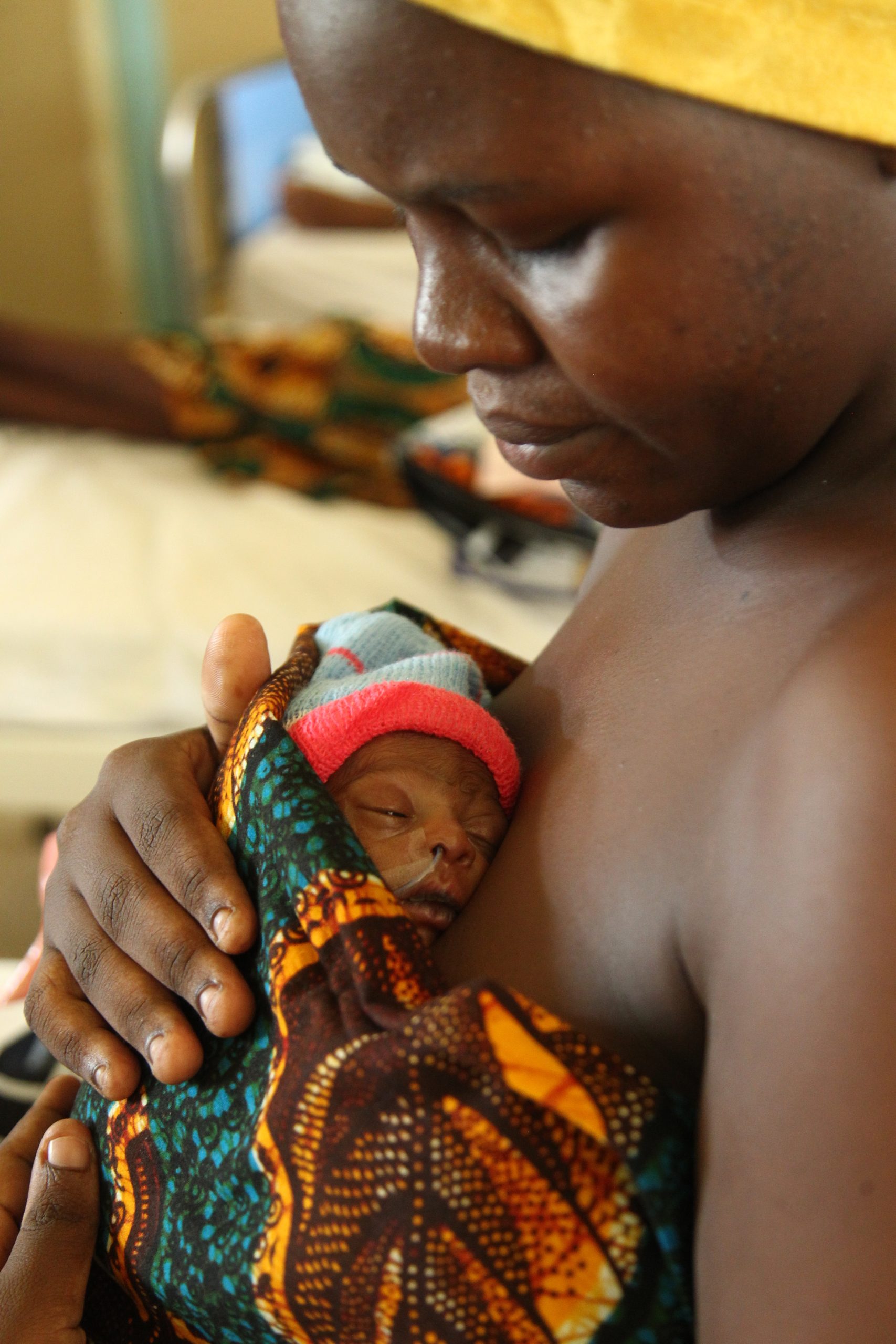
The first physical contact between a newborn and their parents is vital for forming a close emotional bond. This early connection helps lay the foundation for the child's emotional and social development. One highly effective method to encourage bonding is Kangaroo Mother Care (KMC), where the baby is placed skin-to-skin on the parent's bare chest.
Kangaroo Mother Care (KMC) is a proven, life-saving neonatal care practice that benefits all newborns, especially those who are born preterm, have low birth weight, or require immediate medical attention. According to the World Health Organization (WHO), KMC includes three essential components [1]:
Continuous and prolonged skin-to-skin contact (8–24 hours per day, for as long as possible), initiated immediately after birth
Exclusive breastfeeding or breastmilk feeding
Timely discharge from the NICU to a lower level of care or home, with ongoing skin-to-skin contact and close monitoring
Skin-to-skin contact often begins before breastfeeding and plays a vital role in encouraging mother-infant bonding and initiating breastfeeding. Once successful, it supports continued exclusive breastmilk feeding. Formula feeding should only be used in exceptional cases.
This approach empowers mothers by giving them an active role in their baby’s care—a major shift in traditional healthcare dynamics. It prioritizes the needs of families and their newborns, placing them at the center of care and calling for systemic transformation in how maternal and newborn care is delivered globally [1].
Extensive research confirms that (immediate) KMC delivers significant health and developmental benefits for both infants and their parents.
Benefits for the Newborns
KMC has been shown to significantly improve outcomes for hospitalized newborns, including:
Lower mortality rates [2, 3, 4, 7, 9, 10]
Reduced infection and sepsis rates [2, 3, 4, 7, 9, 10]
Fewer cases of hypothermia and better temperature regulation [2, 3, 6, 9]
Improved weight gain [4, 6, 9, 10]
Enhanced physical growth [4, 8, 9]
Better motor and sensory development [1]
More stable breathing and heart rates [2, 8]
Improved sleep quality [8]
Greater brain activity and cognitive development [1, 2, 4, 6, 8]
Improved long-term outcomes, including academic performance and behavior [1]
Additionally, KMC has been recognized as an effective form of pain management. Both direct skin-to-skin contact and breastfeeding reduce pain in infants, offering neuroprotective benefits during this vulnerable stage of development [11, 12].
Benefits for Parents and Families
The impact of KMC extends beyond the newborn—parents and families also benefit profoundly:
Higher breastfeeding rates [3, 4, 6, 7, 8, 9, 10]
Shorter third stage of labor and reduced risk of postpartum hemorrhage [1]
Shorter stays in NICUs and hospitals overall [2]
Stronger family bonding and deeper infant-parent attachment [1, 3, 6, 8]
Lower stress levels for both infants and caregivers [3, 5, 6, 10]
Reduced risk of postpartum mental health conditions, such as depression [1, 8, 10]
Empowerment of parents as primary caregivers, fostering a sense of purpose and agency [1]
Increased confidence and competence in caring for their baby [1, 3]
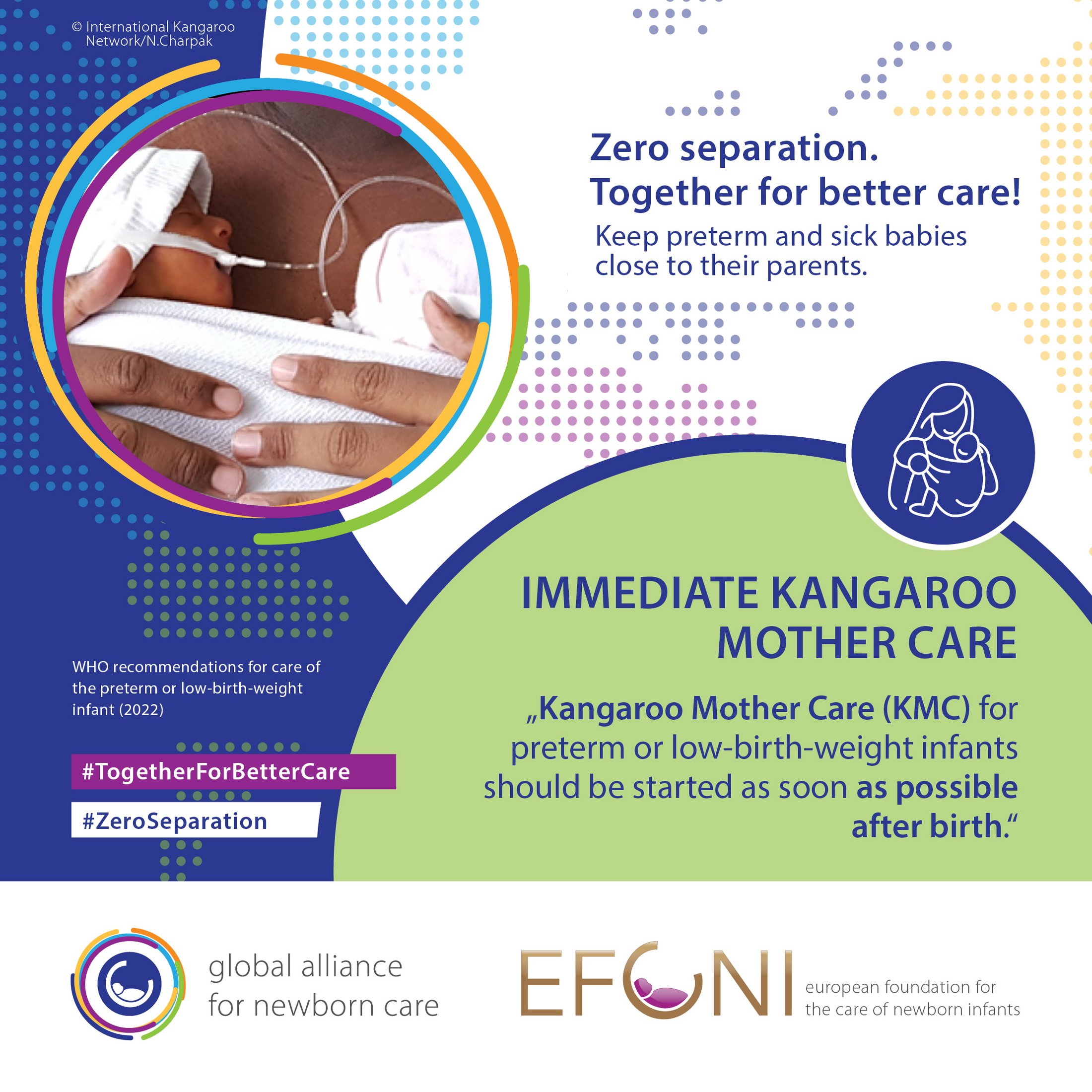
The latest WHO guidelines recommend starting Kangaroo Mother Care immediately after birth (or right after resuscitation, if needed) [1, 4]. This practice, known as Immediate Kangaroo Mother Care (iKMC), can begin even before the newborn is clinically stable—preventing harmful separation of mother and baby [7, 10].
Exceptions apply only when the baby:
Cannot breathe on their own after resuscitation,
Is in shock, or
Requires mechanical ventilation
In such cases, life-saving treatment takes precedence. If the mother is unable to participate in iKMC—for example, due to medical needs—a partner or other family member should be encouraged to step in and provide skin-to-skin contact.
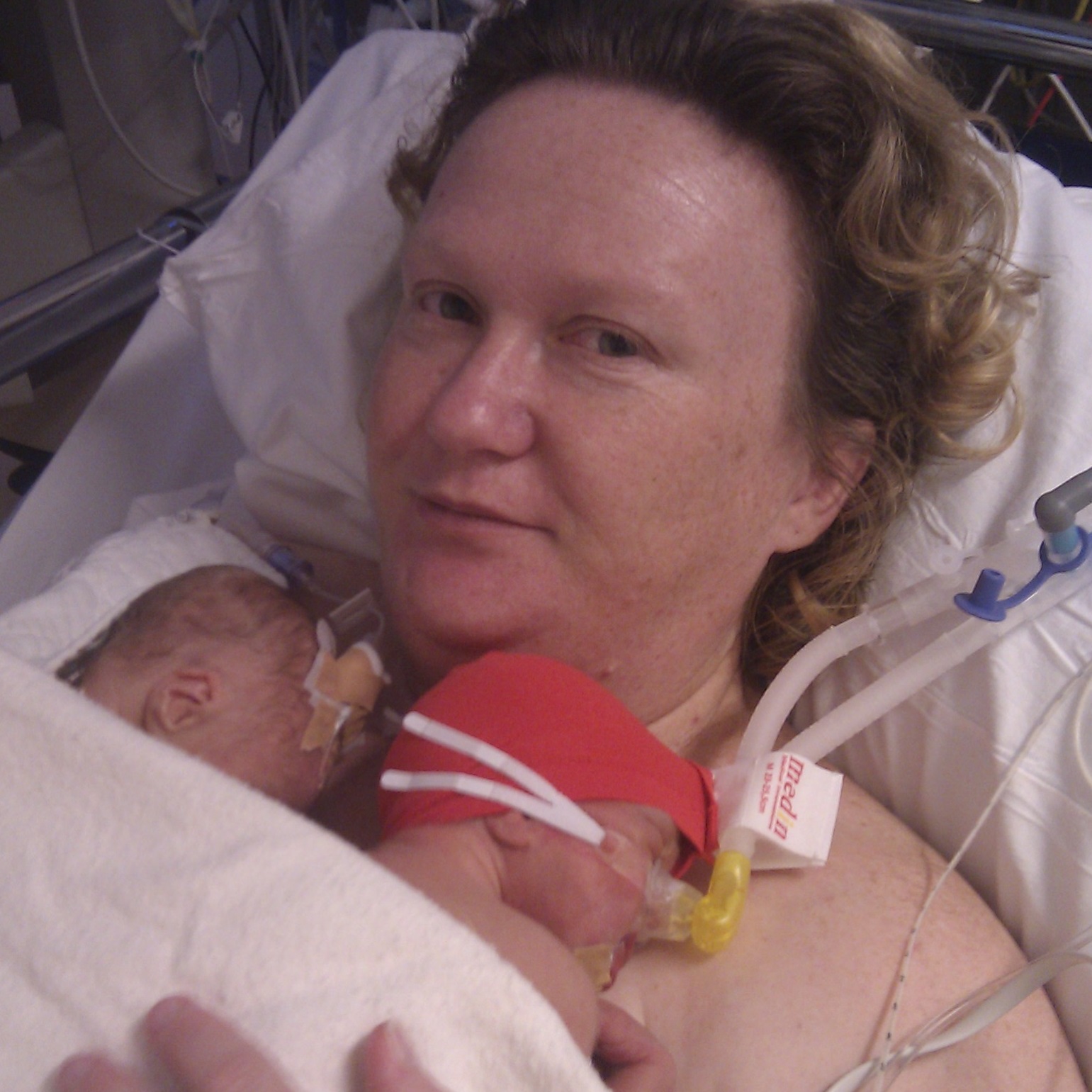
When a newborn lies on their mother’s chest, they hear her heartbeat, recognize her scent, and feel safe and secure. This familiar environment helps them calm down and regulate their vital signs. At the same time, the mother provides nourishing breastmilk—specifically tailored by her body to meet the infant’s gestational age and individual health needs. Kangaroo Mother Care (KMC) has also been proven to promote exclusive breastfeeding, benefiting both mother and baby simultaneously [2, 3].
Recent research highlights the powerful role that other family members—especially the father or non-birthing partner—can play in KMC [13, 14]. When they provide extensive skin-to-skin contact, even immediately after birth, newborns reach and maintain thermal stability just as effectively as with the mother. This applies to both preterm infants and healthy term newborns.
These findings reinforce the importance of family-centered care: rotating skin-to-skin contact among family members not only benefits the newborn but also gives the mother the chance to rest and recover. Involving fathers, partners, and loved ones transforms care into a shared responsibility—a core value promoted by GFCNI in its commitment to family-integrated neonatal care.
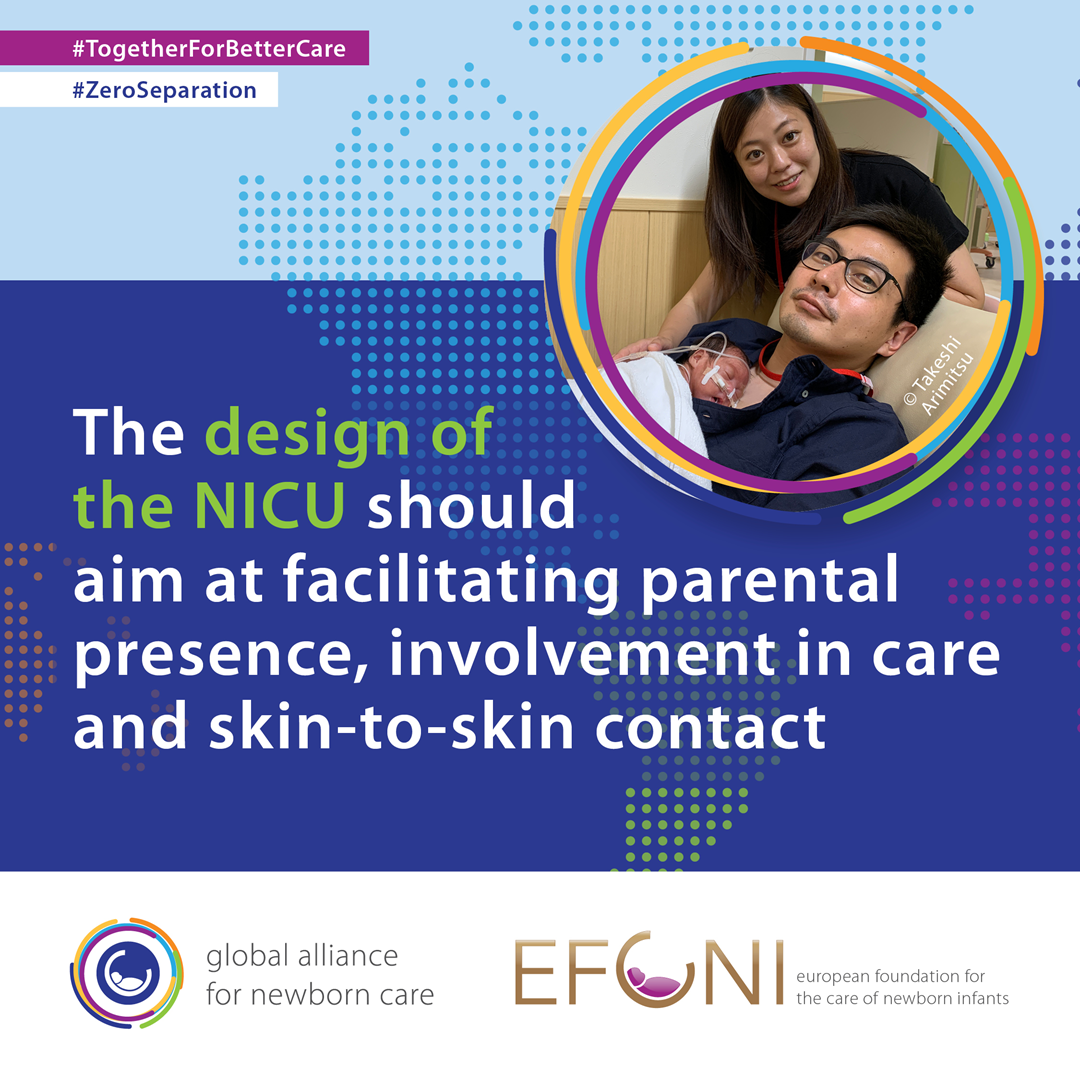
KMC can be practiced both in the hospital and at home, ideally for as many hours a day as possible. According to the most recent WHO guidelines, skin-to-skin contact should be provided for at least 8 hours per day, and optimally up to 24 hours per day, supporting a “Zero Separation” policy.
To make this a reality, hospitals must redefine the role of parents in neonatal intensive care units (NICUs). Embracing (Immediate) Kangaroo Mother Care means recognizing parents as essential members of the care team—not as visitors. Parents need 24/7 access to their infants and be actively supported and involved.
Infrastructure and Support for Effective KMC:
Hospitals with perinatal and neonatal units should be equipped with
Comfortable chairs or beds to support prolonged skin-to-skin contact
Lactation support to encourage and assist with breastfeeding
Accessible bathrooms so mothers can maintain personal hygiene
Nutritious meals provided in a welcoming area to promote proper nourishment
Family support systems, allowing partners, relatives, or close friends to care for the mother and step in with KMC when she needs a break.
By implementing these standards, healthcare facilities create an environment where (immediate) Kangaroo Mother Care is not only possible but sustainable—leading to better health outcomes for infants and a more empowered experience for families.
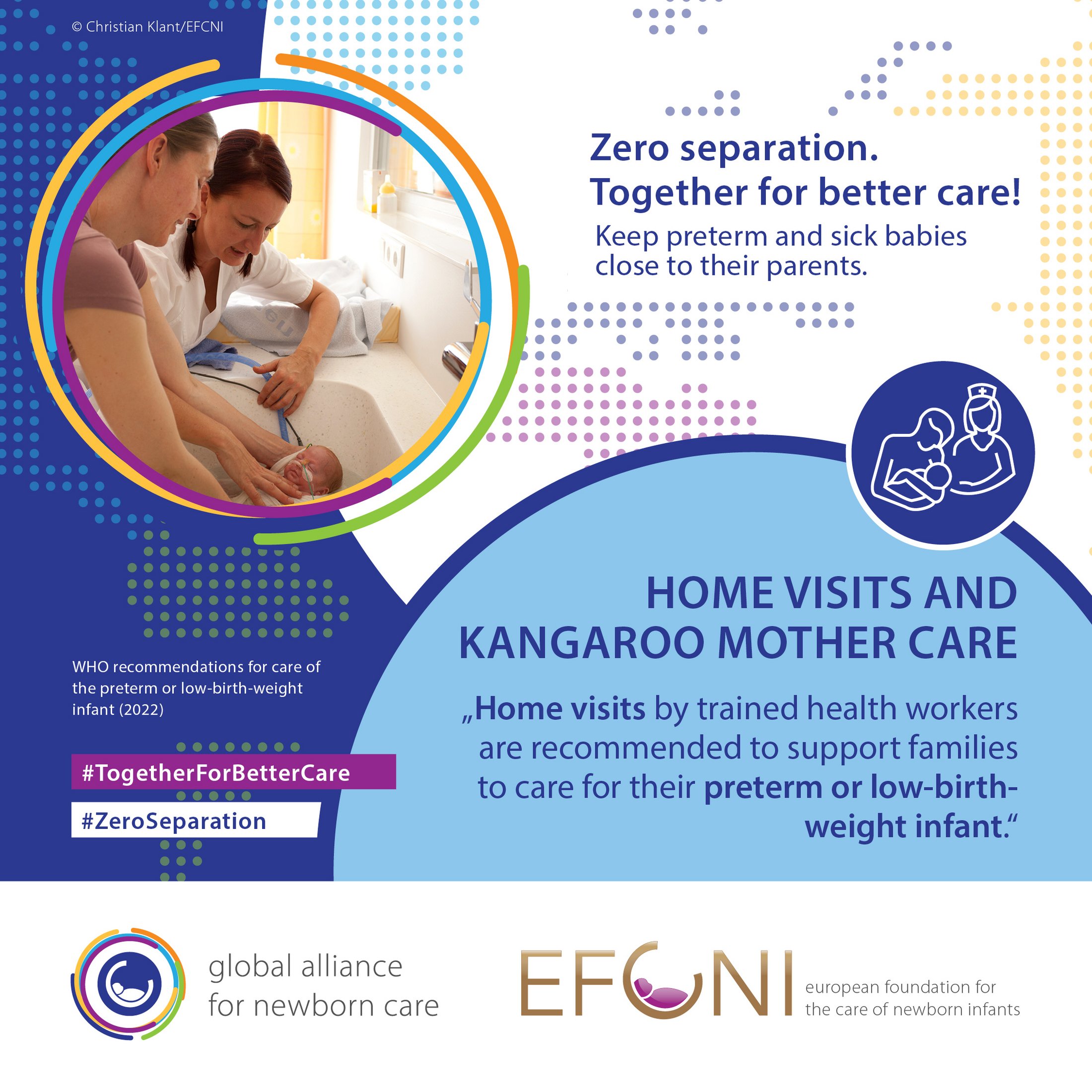
Kangaroo Mother Care (KMC) should not end at hospital discharge. Families must be empowered and supported to continue practicing skin-to-skin contact and breastfeeding in their own homes. Achieving this requires close collaboration between families and healthcare professionals, as well as access to:
Personalized counseling and guidance
Ongoing support from trained staff
Regular follow-up visits, either at home or in a local healthcare facility
By extending KMC into the home environment, families can maintain the benefits of this evidence-based practice during a critical time of growth and development.
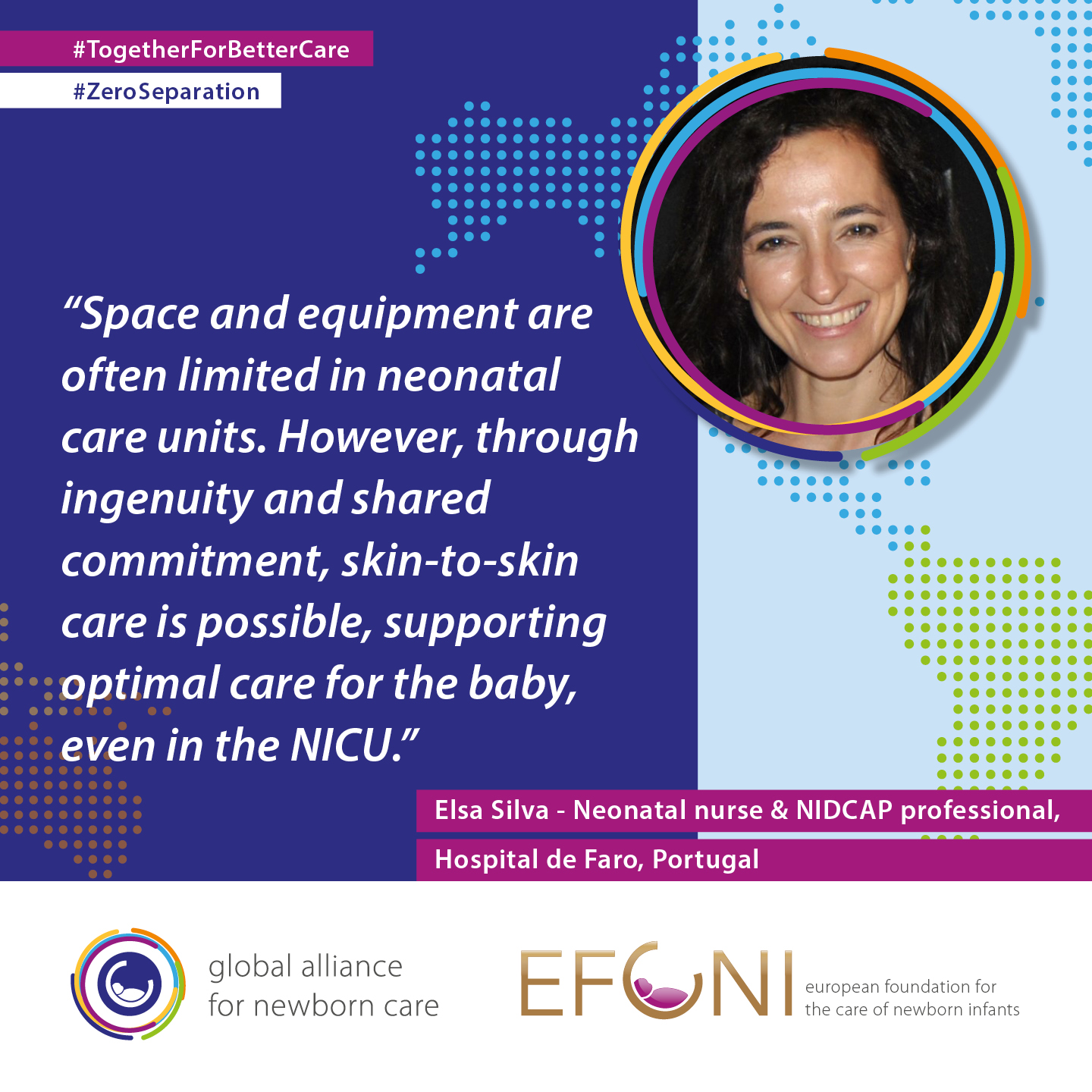
Parents commonly perceive Kangaroo Mother Care (KMC) as a deeply meaningful way to connect, bond, and actively care for their child. It reinforces their parental role, helps to strengthen the relationship between partners, and improves the emotional environment in which the child grows up [1].
Beyond the family unit, healthcare systems and hospitals also benefit from implementing (immediate) KMC:
Lower operational costs: KMC requires no expensive equipment, which reduces capital investment and ongoing maintenance needs.
Shorter hospital stays: Infants practicing KMC tend to recover and stabilize more quickly [3].
Optimized staff use: As infants need less handling by medical personnel, staff are freed up for other critical care tasks [1, 3, 8].
Promotion of respectful maternal and newborn care, a growing global priority in health systems [1].
These advantages underscore KMC as a cost-effective, evidence-based practice that benefits families, caregivers, and healthcare infrastructure alike.
The powerful effects of (immediate) KMC are not just observable in health outcomes—they are also measurable at the biological and chemical level. Research has revealed a number of physiological processes triggered by prolonged skin-to-skin contact and breastfeeding, which benefit both mother and infant [1]:
Oxytocin release in mothers: Skin-to-skin contact and breastfeeding flood the mother's body with oxytocin, promoting feelings of well-being, enhancing breastmilk production, and supporting exclusive breastfeeding. It also strengthens mother-infant interactions.
Oxytocin release in infants: The infant's body also produces oxytocin, which boosts the immune system, promotes the production of T-cells, and suppresses inflammatory cytokines.
Reduced cortisol and stabilized heart rate: Early skin-to-skin contact lowers cortisol levels and induces the release of oxytocin, reducing stress and promoting physiological stability.
Microbiota transfer: Skin contact transfers protective microbiota from the mother to the infant, improving the infant’s immune defenses.
Neurochemical development: Skin-to-skin contact activates opioid systems and dopamine release in both mother and child, which helps establish neural circuits involved in social and emotional processing.
These biochemical mechanisms help explain why KMC is one of the most effective, natural, and affordable interventions for improving newborn survival and long-term development.
Kangaroo Mother Care (KMC) has been embraced by leading medical professionals and institutions around the world. These experts highlight how KMC is transforming neonatal care through family empowerment, clinical innovation, and evidence-based practice. Click through the tabs and watch the full videos.
Why is practicing Kangaroo Mother Care (KMC) essential to empower families?
Dr. Carmen Pallás Alonso, Head of the Neonatal Unit at Hospital Universitario 12 de Octubre in Madrid, and a member of the Spanish Maternal & Child Health Network (SAMID-RICORS), shares her perspective on KMC as a family-empowering care model.
In her interview, she explains how KMC enables mothers and families to take control of their own care and their newborn’s journey—fostering both confidence and competence.
Skin-to-Skin Contact & Kangaroo Care in the NICU - Interview with Prof. Abou-Dakn and Dr. Schmitt
At St. Joseph Hospital in Berlin Tempelhof, KMC is part of daily clinical practice. As a certified Baby-Friendly Hospital, the institution plays a pioneering role in implementing family-centered neonatal care.
In this interview (video in German), Prof. Michael Abou-Dakn and Dr. Caroline Schmitt share their insights on:
The rooming-in concept for parents and preterm infants
How family-friendly hospital certification shapes care delivery
The role of early bonding in promoting breastfeeding
Live Q&A with Dr. Nathalie Charpak and Diane Schultz
In this engaging session, Dr. Nathalie Charpak (founder of the Kangaroo Foundation, Colombia/France) and Diane Schultz (NICU nurse, St. Boniface Hospital, Canada) discuss:
Key benefits of early skin-to-skin contact and KMC
Common challenges and lessons learned from implementation
Produced by the World Health Organization, this educational video explains the global significance of Kangaroo Mother Care, its clinical foundations, and its potential to save lives and improve long-term outcomes.
[1] Kangaroo Mother Care: Implementation Strategy for Scale-Up Adaptable to Different Country Contexts (World Health Organization, 2023). PDF (ISBN: 9789240071636-eng).
[2] Healthy Newborn Network. “Kangaroo Mother Care.” Healthy Newborn Network, https://www.healthynewbornnetwork.org/issue/kangaroo-mother-care/. Accessed 12 Jan. 2023.
[3] World Health Organization. Kangaroo Mother Care: A Practical Guide. World Health Organization, 2003. https://www.who.int/publications/i/item/9241590351.
[4] World Health Organization. WHO Recommendations for Care of the Preterm or Low-Birth-Weight Infant. World Health Organization, 2022. https://apps.who.int/iris/handle/10665/363697.
[5] Chan GJ, Labar AS, Wall S, Atun R. “Kangaroo Mother Care: A Systematic Review of Barriers and Enablers.” Bulletin of the World Health Organization, vol. 94, no. 2, 2016, pp. 130–141J. doi: 10.2471/BLT.15.157818.
[6] Charpak N, Gabriel Ruiz J, Zpan J, Cattaneo A, Figueroa Z, Tessier R, Cristo M, Anderson G, Ludington S, Mendoza S, Mokhachane M, Worku B. “Kangaroo Mother Care: 25 Years After.” Acta Pædiatrica, vol. 94, no. 5, 2005, pp. 514–522. doi: 10.1111/j.1651-2227.2005.tb01930.x.
[7] World Health Organization. “Kangaroo Mother Care Started Immediately after Birth Critical for Saving Lives, New Research Shows.” World Health Organization, 26 May 2021. https://www.who.int/news/item/26-05-2021-kangaroo-mother-care-started-immediately-after-birth-critical-for-saving-lives-new-research-shows. Accessed 12 Jan. 2023.
[13] Lode-Kolz K, Hermansson C, Linnér A, Klemming S, Hetland HB, Bergman N, et al. “Immediate Skin-to-Skin Contact After Birth Ensures Stable Thermoregulation in Very Preterm Infants in High-Resource Settings.” Acta Paediatrica, 2022. https://onlinelibrary.wiley.com/doi/10.1111/apa.16590.
[14] Ayala A, Christensson K, Christensson E, Cavada G, Erlandsson K, Velandia M. “Newborn Infants Who Received Skin-to-Skin Contact with Fathers After Caesarean Sections Showed Stable Physiological Patterns.” Acta Paediatrica, vol. 110, no. 5, 2021, pp. 1461–1467. https://pubmed.ncbi.nlm.nih.gov/33403688/.
[8] EFCNI, Bergman NJ, Westrup B, Kuhn P, Daly M, Bertoncelli N, Caballero S, König K. “Very early and continuous skin-to-skin contact.” European Standards of Care for Newborn Health, 2018. https://newborn-health-standards.org/standards/standards-english/infant-family-centred-developmental-care/very-early-and-continuous-skin-to-skin-contact/.
[9] Conde-Agudelo A, Díaz-Rossello JL. “Kangaroo Mother Care to Reduce Morbidity and Mortality in Low Birthweight Infants.” Cochrane Database of Systematic Reviews, no. 8, 2016. doi: 10.1002/14651858.CD002771.pub4.
[10] WHO Immediate KMC Study Group. “Immediate ‘Kangaroo Mother Care’ and Survival of Infants with Low Birth Weight.” The New England Journal of Medicine, vol. 384, 2021, pp. 2028–2038. doi: 10.1056/NEJMoa2026486.
[11] Choudhary M, Dogiyal H, Sharma D, Datt Gupta B, Madabhavi I, Choudhary JS, Choudhary SK. “To study the effect of Kangaroo Mother Care on pain response in preterm neonates and to determine the behavioral and physiological responses to painful stimuli in preterm neonates: a study from western Rajasthan.” Journal of Maternal and Fetal Neonatal Medicine, vol. 29, no. 5, 2016, pp. 826–831. doi: 10.3109/14767058.2015.1020419.
[12] Shukla VV, Bansal S, Nimbalkar A, Chapla A, Phatak A, Patel D, Nimbalkar S. “Pain Control Interventions in Preterm Neonates: A Randomized Controlled Trial.” Indian Pediatrics, vol. 55, no. 4, 2018, pp. 292–296. PMID: 29428919.
© 2025 GFCNI. All Rights Reserved.